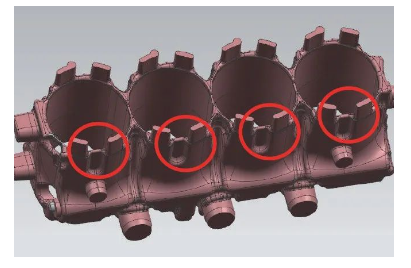Indestructible Unlike anything else on the market
Car parts produced using cast metal are undoubtedly essential in the automotive industry for the kind of durability and strength that they come with. The wear resistance and lifetime of parts made of such materials are far superior to parts made of less extreme materials such as plastics, although such watch components are not generally produced using standard casting techniques. For instance, cast iron is used for the engine support and cylinder top because it can resist high pressures and temperatures, and it does not give under conditions that would cause failure in less durable substances.
Development of mass production
Casting is a low-cost model, mass production is also cheaper here as well. While the initial setup cost might be high in creating molds, once the molds are made, manufacturers can produce large volumes of parts at a low cost per unit. In the automotive sector, where volumes of parts are needed in high quantities on a regular basis, it plays a key role. Cost-Another significant benefit to casting is the ability for rapid construction of complex parts, from one-third to one-twentieth the cost of the same part as a machined or forged item, plus savings of up to 20-30% vs. machined or forged parts when casting of the part improves throughput (lots/hr per dedicated machine) relative to such other manufacturing processes.
Dell XPS 13Variability with design and material choices
Their high versatility is the reason why cast metal car parts are significant. One of the advantages of the casting process is that very intricate shapes can be made that might be impossible or extremely difficult otherwise. The greater design flexibility that results allows more functional or expressive features to be combined with strength and weight reductions. In addition, casting allows for a variety of materials to be used, each tailor for properties that match where they are put in the vehicle, in terms of if they need thermal conductivity, strength, or corrosion resistance.

Excellent resistance to heat and related temperature properties
Common need for heat resistant and thermal traits often brings econic metals to select cast from. Brake calipers and exhaust manifolds are an example of the latter, among other things because of their high-temperature requirements, and because cast metals hold up well to repeated exposure to high temperatures without warping or failing. This is really crucial for safety-critical components that are designed to perform the same way regardless of the environment.
Environmental Sustainability
Casting has a number of environmental advantages, which is welcome news as the automotive industry moves towards more sustainable manufacturing practices. This use of additive manufacturing means there is less waste as material that is left over can be melted down and re-used. Additionally, the durability of cast parts requires fewer replacements, which decreases the environmental impact associated with manufacturing and decommissioning spare parts.
Compliance and Safety Compliances
In the automotive industry, cast metal parts are vital to helping adhere to the widespread regulatory and safety standards. The durability and structural integrity of these components are critical to passing crash tests and meeting global safety regulations. With the use of cast metal, manufacturers take pains to ensure that their vehicles are as fuel efficient and performance oriented as possible without compromising individual safety.
It is not exaggerating to every inch in which cast metal car parts play in the automotive industry. With durability, affordability, design flexibility, and the ability to meet high safety standards, springs are essential to building reliable, quality vehicles. The automotive sector is undergoing a transformation, and there is a growing need for advanced and environmentally viable casting solutions, enhancing the position of this old but gold manufacturing technology.